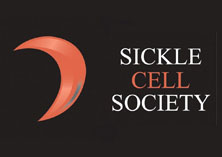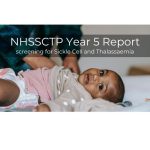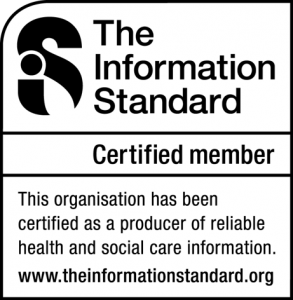This is a report on external research. It is not endorsed by the Sickle Cell Society and does not form part of our Information Standard-accredited information
Giovanna Russo and Gino Schiliro
Division of pediatric Hematology and Oncology, University of Catania, Catania, Italy
Sickle cell disease (SCD) is the most common genetic abnormality that afflicts people of African ancestry and it is the most frequent hemoglobinopathy in Italy. It is defined as a clinical abnormality due to the presence of only HbS (b s bs) within the red cells, of HbS and another abnormal haemoglobin (b S b other Hb), or of HbS with b -thalassaemia (bSb th).
Particularly, hemoglobin S may be present with one of the various forms of b thalassemia, giving rise the compound heterozygosity that was first described by Silvestroni and Bianco in 1944 (1). Since then, the compound heterozygosity for Hb S and b thalassemia has been reported to be present in different ethnic groups, particularly in the Mediterranean area, where the b th gene is highly prevalent (2).
The b thalassemias are characterized by decreased or absent synthesis of b globin chains, due to mutation within the b globin gene. b thalassemia is referred to as b ° if the mutated gene causes no production of b globin at all, andb + if the gene causes a reduction of b globin synthesis.
The genes for b globin variants and b thalassemia are allelic; therefore the presence of two mutated genes, one for Hb S and the other for b thalassemia, precludes the existence of a normal b gene. Therefore, patients with (b Sb th) produce almost (b +)or exclusively (b °) Hb S. The resulting clinical picture is very similar to the one of sickle cell anemia (b S b S). However minor differences between b s b s and b s b th exist and we will focus on them.
HbS is endemic in Sicily area for and this anomaly has been described in Sicilians and in people of Sicilian ancestry (3). For thousands of years the Mediterranean basin has been the crossroad for trade, races, ideas, and art. The geographical position of Sicily at the center of the Mediterranean made it a natural stopover on these journeys. Phoenicians, Greeks, Carthaginians, Byzantines, Saracens, Normans, Spaniards, Arabs, Jews, and mercenaries from allover the world came to Sicily in large numbers to settle. In contrast with the past, there has been almost no immigration during the last few centuries. The genetic structure of the Sicilians is clearly not due to recent additions. The consensus is that the gene was introduced into Sicily and Southern Italy from Northern Africa through the trans-Saharan trade routes, or, alternatively, by means of the Greek colonisation, although the introduction of the gene into Sicily during the Muslim invasion cannot be excluded.
The overall Hb S gene frequency in Sicily is 2%; it is concentrated on the eastern and southern coasts, reaching frequencies as high as 13% in certain villages (fig.l). The incidence of the b th genes is roughly over 5%. Therefore, the most common conditions observed among our patients is b Sb th, whereas sickle cell anemia (b S b S) is less frequent.
As a result of the domestic migration from Sicily and Southern Italy towards Northern Italy, sickle cell disease has spread over all of Italy (fig.2). Moreover, recent immigration from foreign countries, in particular from Africa, has contributed to the further diffusion of the disease in Italy.
In a recent survey of SCD in Italy, we found that sickle cell disease is widely distributed in Italy, b Sb th being the most frequent form (4). However the majority of patients still live in Sicily, where we have the almost unique opportunity to observe so many compound heterozygotes and to compare such patients to homozygous ones.
At present there are in Sicily about 400 patients with sickle cell disease who cannot be distinguished from other Sicilian subjects; we have observed three blond, blue-eyed patients (fig.3).
The clinical features include chronic hemolytic anemia, intermittent vaso-occlusive painful crises, occasional infections, and may also include complications such as CNS accidents, leg ulcers, retinopathies, renal failure etc.
In b Sb th patients the clinical picture may vary from almost asymptomatic cases to severe ones. Onset of symptoms occurs later, full term pregnancies are more common, even if these data have not been confirmed on a larger analysis; painful crises and leg ulcers are less frequent, especially in b Sb +th patients, gallstones are less prevalent and occur at an older age (4,5).
In b Sb th patients spleen enlargement, which usually decreases with age in b S b S patients, tends to persist, while splenic sequestration episodes and hypersplenism are less frequent. The incidence of infectious complications is similar (4,5).
From a hematological point of view, mycrocytosis and hypocromia, high levels of Hb A2 are constant, while Hb concentration is usually higher, especially in b Sb +patients (table I).
The b Sb th syndrome is a disease in which the clinical component is controlled by genetic and environmental factors. The acquired components affecting the clinical expression are socio- economic conditions, diet, upbringing, type of occupation, self-management, and quality of medical care.
The genetic factors include mostly the type of b th mutation. There is generally a milder expression in b Sb + patients than in those with the b Sb o condition (table I). The b +condition has a more heterogeneous presentation, since the amount of Hb A produced varies greatly, from almost nihil to near normal. The type of b +thalassemia mutation is able to influence the severity of b Sb +thalassemia according to the residual output of b globin chains from the affected b globin gene. As an example, the mild clinical picture of b Sb + IVS-l nt 6 thalassemia is presumably related to the relatively high b chain output, which results in a mild degree of globin chain imbalance. The more balanced globin chain synthesis results in a mild degree of hemolysis, while the presence of a significant amount of Hb A in the peripheral red blood cells may reduce the extent of sickling (table I).
These patients have a good quality of life and the diagnosis is often made accidentally. This observation is important from a practical point of view because such subjects might go undetected in screening programs and gene analysis should be made to provide correct data for genetic counseling (6).
A correlation between clinical severity and the amount of Hb A, which depends on the type of thalassemia, has been found also in Jamaicans; patients with no Hb A in the peripheral blood (b S b o) had a more severe clinical course than those with a high Hb A level (20-30%), while no differences were detected in comparison to those with low Hb A (5-15%) (7,8).
Sicilian patients with b Sb + thalassemia had mild to moderate clinical manifestations, as indicated by the number of sickle cell crises and hospital admission per year, while those with b S b o thalassemia showed mild to severe clinical expression. Anemia was more pronounced in those patients with b S b o thalassemia as compared to those with b Sb+ thalassemia, although the difference was statistically significant only between b Sb o thalassemia and the b Sb +IVS-l nt 6 genotype constitution (9,10).
It is of interest to note that the IVS-I-110 and IVS-II-745 mutations will cause a severe disease in the homozygous state but when combined with the b S allele, severe disease was observed in only a minority of these patients (10).
In those patients with b S b o thalassemia the wide clinical variability was not correlated to the type of b o mutation. In these patients part of the clinical variations may be attributed to the Hb F level, which was higher in patients with a mild to moderate clinical expression as compared to those with more severe manifestations. HbF levels are usually increased, but they are not as high as those found in b S b S subjects; Hb F is higher in b S b o than in b Sb + patients (table I).
Another genetic factor which is known to have an influence on the clinical expression in sickle cell disease in the coinheritance of an µ -thalassemia trait, a factor that is known to ameliorate the b thalassemia condition. However, the probability that an µ thal determinant causes the variation in clinical and hematological findings in our patients is negligible; in fact, gene mapping excluded the presence of an µ -thal in 37 of our patients in a previous study (5), thus confirming the rarity of µ thal mutations in Sicily.
In conclusion, the clinical condition of b Sb th is generally less severe than the homozygous form. The different types of b thal partly explain the broad heterogeneity in clinical condition. However other genetic factors which are not associated with a particular b S or b th mutation must also play a role.
Table I Hematologogical and hemoglobin data in patients with sickle cell disease CD according to genotype.









